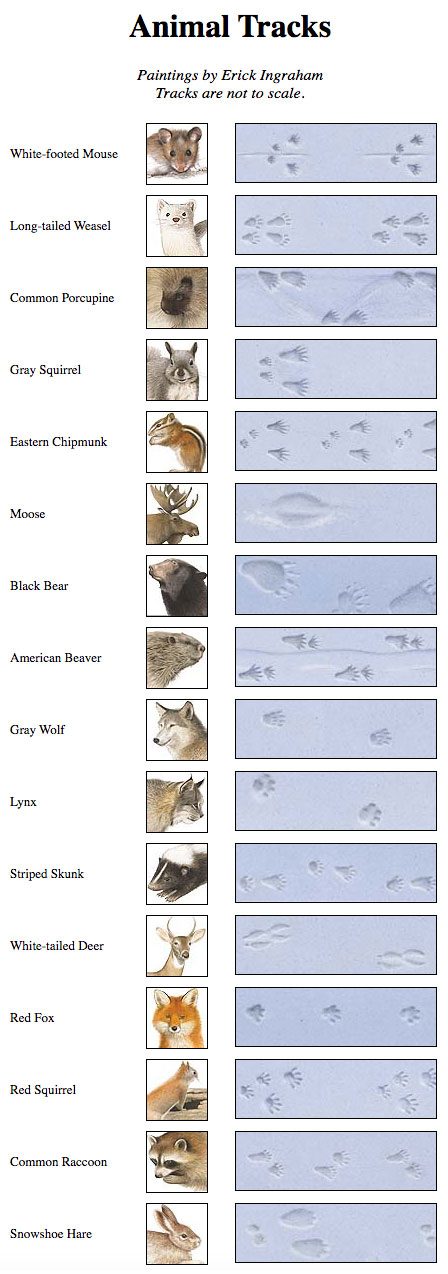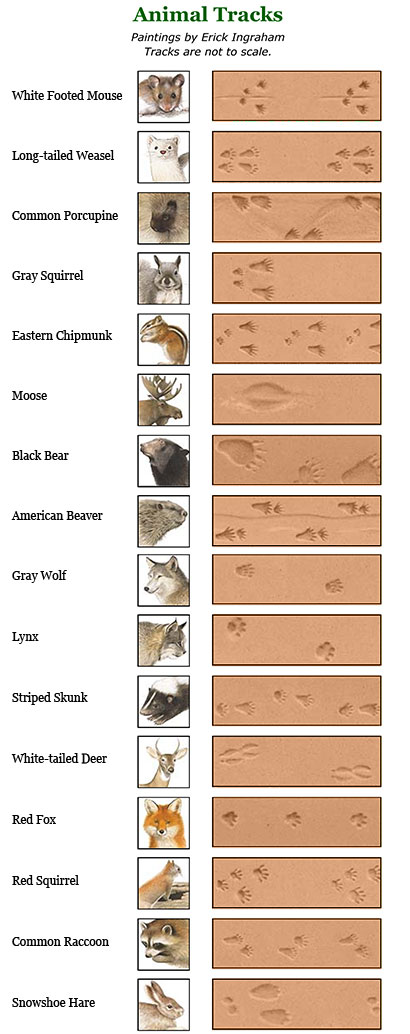
Identifying Animal Footprints and Paw Prints
ADVERTISEMENT
Quiero mandarles unas fotos de unas huellas que tomé porque no sé de qué animal es Es como de cuatro picos pero aquí no me da la opción de enviar fotos
Can you please tell me what some tracks are, especially the two parallel lines not interspersed with footprints? Thank you.
Tht would be skis.
I believe we have a coyote den within 50 feet of my home. I’m almost positive I see them each night. They keep coming closer. I have a photo of some tracks in snow can you help me identify them?
Would like to see coyote tracks, we have a pack in the area. I’m waiting for the snow, to see how close they are getting to the house.
My partner and I are at odds over identifying a mysterious track in the snow. It is a single continuous indented line like a snake (snow snake?) about two inches wide with no foot prints beside anywhere. A vole dragging its belly? I say it is more likely snow fallen off a branch from above. We've never noticed any track like this before.
I have pictures of tracks in field next to our home. Deer tracks we know, cats, we know. But this one with three out front and back. We can’t find. Any help would be appreciated. Thank you.
My dog tied up with something that made these marks. 3 claws and a hole. I have a picture. My dog hemmed the animal under our deck but I couldn't see it. It clawed my dogs nose but I never saw the animal. I only heard it growl. It did not sound like a cat.
I noticed that this article didn't include possum tracks. Other than coyotes/the neighbor's dog, and birds, possums are the most seen wildlife in this town. To me, their tracks look like little baby hands.
Looking for Semi-aquatic pet turtle footprints examples _ thank you genuinely great read










